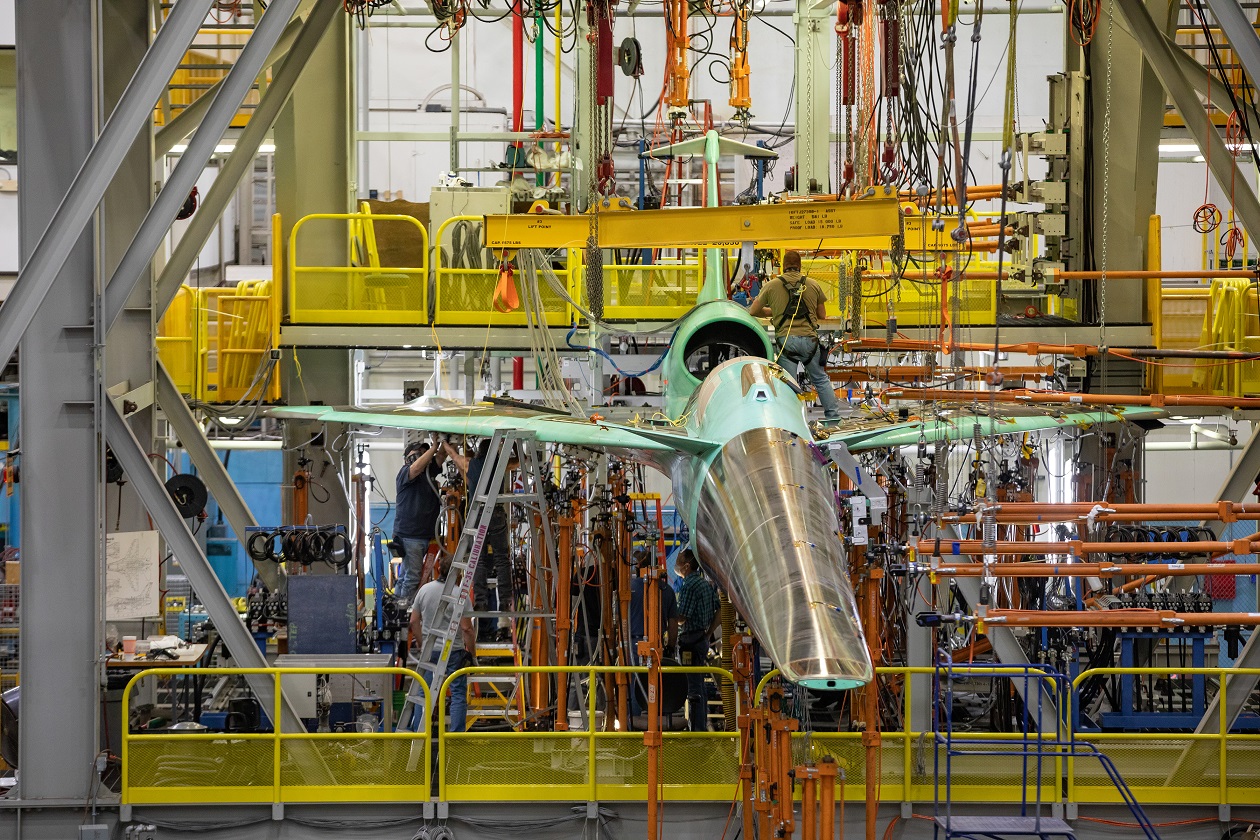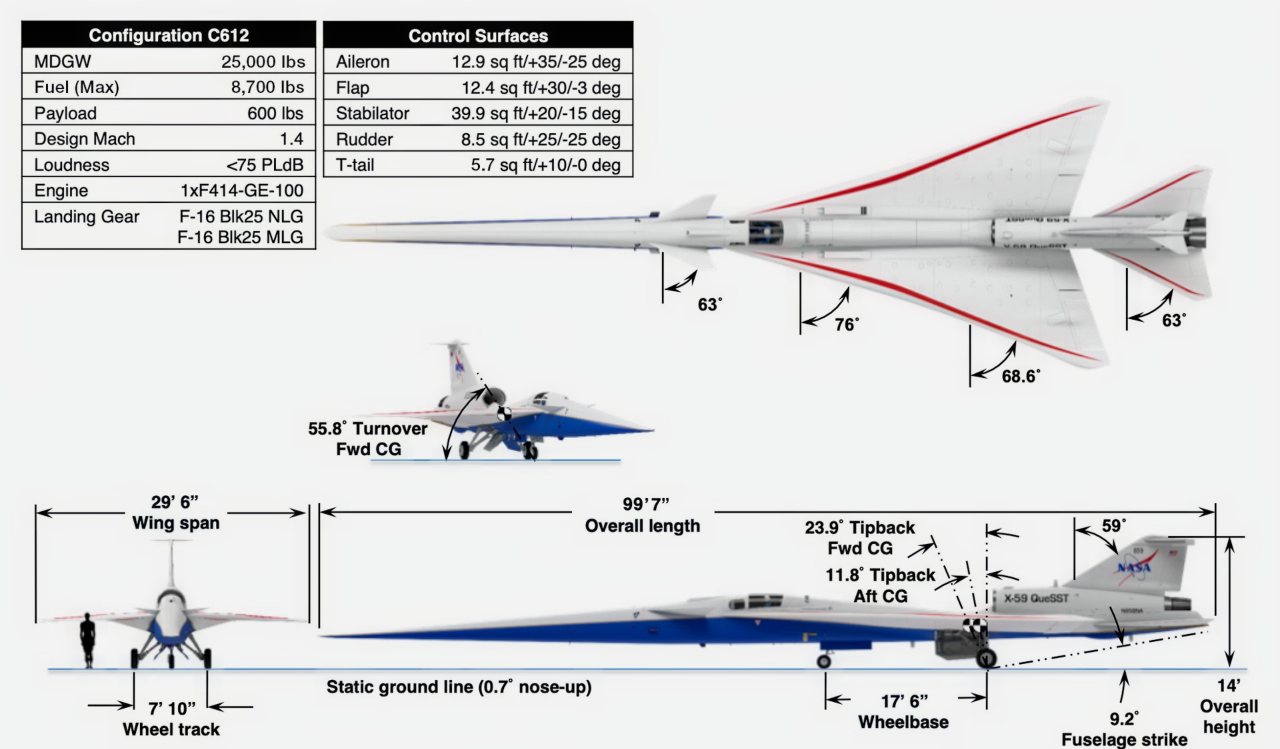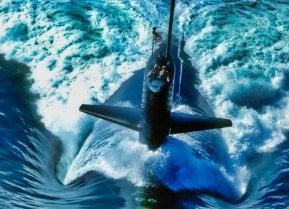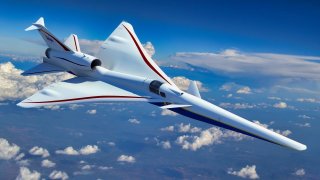NASA’s Supersonic X-59 Supersonic Aircraft Could Change Everything
NASA’s supersonic X-59 aircraft has taken another critical step toward flight, as its engine was powered up successfully on October 30. Developed by Lockheed Martin's Skunk Works for NASA's Quesst mission, the X-59 aims to make commercial supersonic travel quieter by reducing the sonic boom to a soft thump.
What You Need to Know: NASA’s supersonic X-59 aircraft has taken another critical step toward flight, as its engine was powered up successfully on October 30. Developed by Lockheed Martin's Skunk Works for NASA's Quesst mission, the X-59 aims to make commercial supersonic travel quieter by reducing the sonic boom to a soft thump.

-Ground engine tests, with a modified F414-GE-100 engine, confirm all systems' functionality and pave the way for further checks and taxi tests.
-This milestone represents years of development toward the X-59’s maiden flight, projected for next year, marking a new era in supersonic travel technology.
NASA’s Supersonic X-59 Powers Up for the First Time: Maiden Flight Nears
We’re that much closer to the future of commercial supersonic flight, as NASA fired up the engines of its supersonic X-59 experimental aircraft last week. Developed at Lockheed Martin’s Skunk Works facility in Palmdale, California, the X-59 is being developed as part of NASA’s Quesst mission.
The engine-run tests began on October 30, and according to a statement from the aeronautics and space research agency, it was the first time all of the aircraft’s systems were powered up from its own on-board engine. The test was used to determine how the X-59’s systems would operate—as previous tests saw the aircraft powered by external sources.
“The engine-run tests set the stage for the next phase of the experimental aircraft’s progress toward flight,” NASA announced, adding that the engine-run tests will be conducted in a series of stages. The first saw the engine “rotated at a relatively low speed without ignition to check for leaks and ensure all systems are communicating properly. The team then fueled the aircraft and began testing the engine at low power, with the goal of verifying that it and other aircraft systems operate without anomalies or leaks while on engine power.
Engine runs are first conducted on the ground, well before an aircraft’s maiden flight.
“The first phase of the engine tests was really a warmup to make sure that everything looked good prior to running the engine,” explained Jay Brandon, NASA’s X-59 chief engineer. “Then we moved to the actual first engine start. That took the engine out of the preservation mode that it had been in since installation on the aircraft. It was the first check to see that it was operating properly and that all the systems it impacted—hydraulics, electrical system, environmental control systems, etc.—seemed to be working.”
Where’s the Boom?
Designed and built by Lockheed Martin at its famed Skunk Works facility, the X-59 is specifically shaped to quiet the perceived sound of a sonic boom that reaches the ground to that of a gentle thump, similar to a car door shutting in the distance.
Last year, the X-plane completed a series of ground tests at Lockheed Martin’s Fort Worth, Texas, facility to ensure the aircraft’s ability to withstand the loads and stresses of supersonic flight—or flight at speeds faster than Mach 1.
During the tests, the X-59’s fuel systems were also calibrated and tested at Lockheed Martin’s Ft. Worth facilities.
Since the airplane wasn’t actually flying, tests were conducted with the aircraft sitting on hydraulic jacks that were connected directly to the structure.
In addition, structural and fuel calibration tests were completed on the aircraft in preparation for final integration and taxi testing back in Palmdale.
Engine Tests—The Next Step
NASA is now moving the engine tests, which is a “critical phase of testing” that needs to be completed before the X-59 can take its first flight sometime next year.
“The engine, a modified F414-GE-100, packs 22,000 pounds of thrust, which will enable the X-59 to achieve the desired cruising speed of Mach 1.4 (925 miles per hour) at an altitude of approximately 55,000 feet. It sits in a nontraditional spot—atop the aircraft to aid in making the X-59 quieter,” the agency added.
“The success of these runs will be the start of the culmination of the last eight years of my career,” said Paul Dees, NASA’s deputy propulsion lead for the X-59. “This isn’t the end of the excitement but a small steppingstone to the beginning. It’s like the first note of a symphony, where years of teamwork behind the scenes are now being put to the test to prove our efforts have been effective, and the notes will continue to play a harmonious song to flight.”
More Tests
Even as the maiden flight is scheduled for next year, there is still much to be done. The X-59 will next undergo the “aluminum bird testing,” which includes feeding data to the test plane under normal and failure conditions. After that, the team will begin taxi tests, and then preparations for that long-anticipated first flight.

Author Experience and Expertise: Peter Suciu
Peter Suciu is a Michigan-based writer. He has contributed to more than four dozen magazines, newspapers, and websites with over 3,200 published pieces over a twenty-year career in journalism. He regularly writes about military hardware, firearms history, cybersecurity, politics, and international affairs. Peter is also a Contributing Writer for Forbes and Clearance Jobs. You can follow him on Twitter: @PeterSuciu. You can email the author: [email protected].
Image Credit: Creative Commons and/or Shutterstock.


